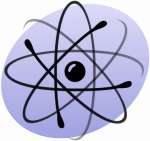Physics
|
25 august 2019 10:00:37 |
| Materials, Vol. 12, Pages 2719: Ultrasonic Measurement of Stress in SLM 316L Stainless Steel Forming Parts Manufactured Using Different Scanning Strategies (Materials) |
|
Tweet Selective Laser Melting (SLM) technology is a new kind of additive manufacturing technology developed in in the last decade. Measurement and control of stress in metal forming layer is the basic problem of SLM forming parts. Critical Refraction Longitudinal (LCR) wave method was used to measure stress. The acoustic-elastic formulas for measuring stresses in SLM 316L stainless steel forming parts manufactured using meander, stripe, and chess board scanning strategies, respectively, were established based on static load tensile test. The experimental results show that the acoustic time difference of LCR wave in SLM specimen manufactured with 316L stainless steel increases linearly with the increase of stress when the tensile stress is less than critical stress (372 MPa, 465 MPa, and 494 MPa). Due to the inhomogeneous deformation of the anisotropic SLM forming layer and the dimple-micropore aggregation fracture mechanism, the acousto-elastic curve fluctuates up and down along the irregular curve when the tensile stress is larger than critical stress. The results of corroboration experiments show that nondestructive measurement of stress in SLM forming specimen can be realized by using LCR wave method. The scanning strategy can significantly affect the tensile strength and yield strength of SLM forming specimen. The stresses were all in tension stress state at the edge of the specimens, whatever scanning strategy was used. Sub-area scanning and scanning sequence of alternate and intersect were adopted, which can effectively reduce the stress in the SLM forming specimen. The overall stress values of SLM forming specimen manufactured using chess board scanning strategy were smaller than that using meander and stripe strategies. The distribution of stress were more uniform. |
| 356 viewsCategory: Chemistry, Physics |
 Materials, Vol. 12, Pages 2720: Variation of Relief Topography and Hardness of Surface Layers of Materials Due to Impact-Oscillatory Loading (Materials) Materials, Vol. 12, Pages 2720: Variation of Relief Topography and Hardness of Surface Layers of Materials Due to Impact-Oscillatory Loading (Materials)Sensors, Vol. 19, Pages 3691: Heat Flux Sensing for Machine-Learning-Based Personal Thermal Comfort Modeling (Sensors) 
|
| blog comments powered by Disqus |
MyJournals.org
The latest issues of all your favorite science journals on one page
The latest issues of all your favorite science journals on one page



